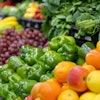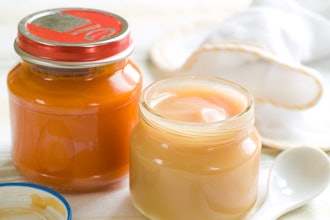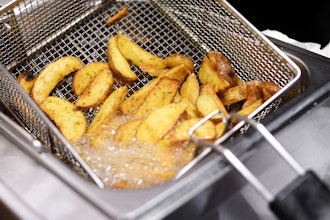LOUISVILLE, Ky. (AP) — Triple-digit heat and dry conditions that withered crops during a brutal summer could end up producing Kentucky's skimpiest corn yields in nearly three decades, a report said Friday.
As a result, many hard-pressed farmers who dreamed of cashing in on high grain prices will have to rely on crop insurance checks instead.
The report, based on conditions as of Aug. 1, estimated that statewide corn yields will shrivel to 65 bushels an acre. That looms as the state's lowest since 1983, when the crop produced 48 bushels per acre, and a whopping 74 bushels off last year's take, according to the report from the National Agricultural Statistics Service's field office in Kentucky.
In west-central Kentucky's Meade County, farmers will be lucky if overall yields break 40 bushels an acre, said Andy Mills, the local agricultural extension agent. It typically yields 150 bushels. It's the worst crop there since 1983, and could turn out to be even more meager, Mills said.
The stretch of 100-degree heat hit as the crop was developing, and several weeks later, the results are visible.
"The stalks are already drying up and the ears of corn are visibly smaller, or there is no ear of corn on the stalk at all," Mills said.
Corn production in Kentucky was forecast at 96.9 million bushels, down 46 percent from last year.
Western Kentucky farmer Bill Clift plans to start corn harvesting next week and usually averages about 160 bushels an acre. This year, he's bracing to top out at 50 bushels per acre. And some fields will be much worse.
"It's going to be the worst crops here in my lifetime, for sure," said the 44-year-old Clift, who farms in Caldwell, Lyon and Crittenden counties. "And I'm pretty sure my dad would tell you the same thing."
Farmers in the western Kentucky grain belt were especially hard hit by drought that accompanied blistering heat.
"From the time it was planted until it was mature ... it never received significant rainfall," Clift said of his corn. "It never really matured. It died prematurely this time."
Just over three-fourths of the statewide corn crop was rated poor or very poor in the latest weekly crop report issued Monday. A scant 5 percent of the corn was rated good.
Clift, who planted about 1,800 acres of corn, said his crop insurance will help cover input costs.
"Looking back, if we'd have known it was as bad as it was, we could have cut input costs," he said. "But I guess farmers are always the eternal optimists. It's always wait for a better day and think it's going to rain tomorrow. And it never happened this year."
Reliance on crop insurance could cause some cash-flow problems for farmers, Clift said. Farmers often sell a crop as soon as it's harvested, pocketing the money right away. But farmers are unsure when they'll receive insurance checks, he said.
"Making it to the point to where we actually get some money coming in is going to be tough," he said.
Meanwhile, his soybean crop has benefited from recent rains that came too late for the corn, Clift said. But he's not expecting yields to top 20 bushels an acre, well off his typical yields of 35 to 40 bushels an acre.
"The heat's been cooking the blooms off them; they've been dropping pods," he said. "They actually look good, there's a lot of vine there, but I'm afraid there's not going to be any beans there."
Kentucky's soybean production was forecast at 40 million bushels, down 31 percent from 2011. Yield was estimated at 29 bushels per acre, 10 bushels below a year ago.
Nearly half the statewide soybean crop was rated poor or very poor in the latest weekly crop report, while 30 percent was fair and 18 percent good.
Kentucky burley tobacco farmers are expected to produce 135 million pounds of leaf, up 5 percent from 2011, the report said. Yield was forecast at 1,900 pounds per acre, down 100 pounds from last year's crop. The crop's condition is mostly fair to good.
Hay production also is forecast to be down significantly from last year due to reduced yields, the report said.
The lower production comes at a time when many cattle farmers already are feeding winter hay supplies to herds because pastures were reduced to stubble by the hot, dry conditions.






















